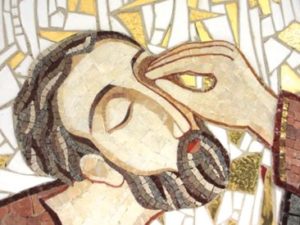 Coming to see Jesus, the Light of the World
Coming to see Jesus, the Light of the World
The gospel reading of this Sunday (the 2nd in the sequel) invites us to reflect on the story of the encounter between Jesus, the man born blind, his parents, and the Pharisees, so that we may experience Jesus as the Light of the World. What does light do? It dispels darkness; it makes us recognise possibilities. In the context of the gospel of today, the light helps us recognise God in person of Jesus.
The gospel text of today offers us three possible attitudes: (a) indifference towards Jesus – the position of the parents of the blind man; (b) blatant denial of the true nature of Jesus – the position of the Pharisees because they are caught up in the web of their Sabbath laws; and (c) the gradual discovery of who Jesus is – the position of the blind man. The Word of God this Sunday invites us to acknowledge our own blindness and come into the presence of the Light of the World. It does not matter even if this movement would be very slow and gradual. The pathway traced by the blind man in his journey of discovery of the true nature of Jesus is marked by three stages and these stages could be our own:
“The man called Jesus” (Jn 9:11): It is surprising to note that someone can receive favours from Jesus, and not recognise the agent. The blind man had reasons not to notice the extraordinariness of the event. Jesus “spat on the ground, made a paste with the spittle, put this over the eyes of the blind man and said to him, “Go and wash in the Pool of Siloam” (Jn 9:6-7). The blind man would have attributed agency of his healing to the paste and to the Pool of Siloam, or even his own effort of going to Siloam. He had forgotten to recognise the pun in the word, ‘Siloam’ – which means ‘sent’. His real cure was caused by the one who was sent from the Father (Jn 6:44). Perhaps the man was also too busy working out a new career, having to give up begging. But his indifference to Jesus is actually challenged by the imbroglio created by the Pharisees.
“He is a Prophet” (Jn 9:17): When the Pharisees challenge the blind man he begins to see the true light. As a result of their persistent inquisition he questions his own indifference. So when they asked him, “What have you to say about him yourself, now that he has opened your eyes?’ The man answered, ‘He is a prophet’” (Jn 9:17). This is not the end of the drama – because Jesus is not just a prophet. When they question him further, the blind man grows in his awareness of who Jesus is. He comes up with two convictions: (a) “You don’t know where he comes from and he has opened my eyes” (Jn 9:30)! Someone whose origin is not known must be divine, because it is only God who does not have a beginning! (b) God only listens to people who are devout and do his will (Jn 9:31). Therefore, “if this man were not from God, he wouldn’t have been able to do anything” (Jn 9:33).
Who is Jesus for me? Is he still that wonderful man who lived 2000 years ago? Or is he just an abstract definition from the Catechism: “the second person of the trinity”?
“Lord, I believe” (Jn 9:38): Finally the scene is set for the climax. It is actually Jesus who catches up with the blind man who has been now thrown out of the synagogue. Jesus makes his self-revelation to him. And “the man said, ‘Lord, I believe,’ and worshipped him” (Jn 9:38). His gesture of ‘worship’ truly confirms his belief in Jesus as the Lord and God!
We are challenged by the Word of God at least to acknowledge our blindness – our difficulty in accepting the true nature of Jesus. And patiently we wait for an encounter with Jesus. We only hope, soon or later, the words of St Paul would be true for us: “You were darkness once, but now you are light in the Lord; behave as children of light…” (Eph 5: 8-9).